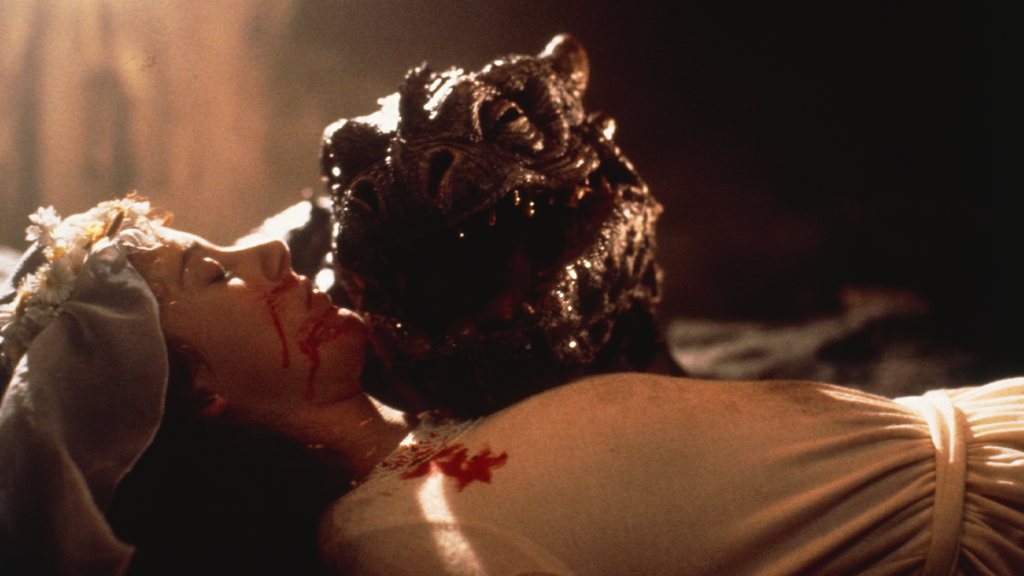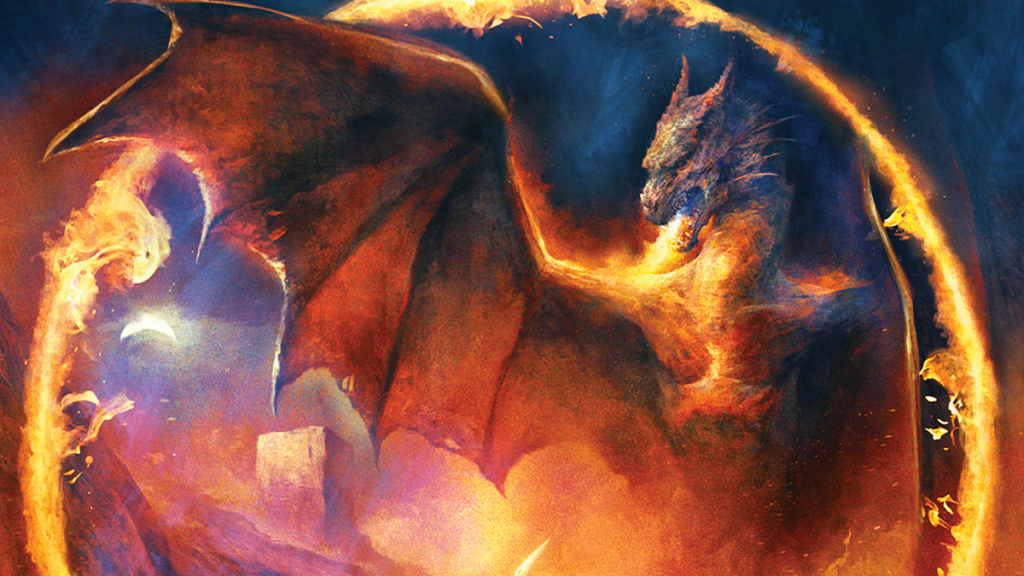ComingSoon Senior Editor Spencer Legacy spoke with Dragonslayer co-writer and director Matthew Robbins about the 1981 dark fantasy movie and its new 4K and Blu-ray rerelease. Robbins spoke about the process behind creating the dragon Vermithrax and working with Guillermo del Toro.
Spencer Legacy: Dragonslayer has a very unique, darker tone. With this new release of the movie coming after over 40 years, how do you look back on the film personally?
Matthew Robbins: With a lot of renewed affection. I had, in some regard, put it off my screen because back in the day, it was released on VHS tapes and early DVDs, and it looked pretty bad. It was sort of an assembly line. It was cranked out by an indifferent robotic technician somewhere. [Laugh]. You could see a lot of defects that were totally unacceptable — ILM and myself would never have allowed it to go out like that. So I did my best to not talk about it. [Laugh] But now … have you seen this new release?
Yeah.
I feel very differently about it. I’m so relieved and glad that this team of technicians and artists at Paramount elected to do this. This was not something that I campaigned for, or Guillermo del Toro — who’s a fan of the movie — had not. I was asked about that. “Did you guys?” No, this came from the studio. So I was amazed and sort of disbelieving, actually. I live in Northern California and was invited down and made several trips down to L.A. and sat in on some of these sessions. Really, they took the lead. I was part of it and had opinions, but they were really on top of almost every technical issue. So how do I feel about it? Immense gratification! [Laugh].
That’s awesome. Speaking of the visual effects, between yourself and the legendary Phil Tippett, what was that collaboration like?
Oh, that was just great. I’m still in touch with him. He lives in Berkeley and I live in West Marin County, so it’s not that far. I think had been champing at the bit at ILM to do this kind of work. Hal Barwood and I, we had been around when George [Lucas] was creating ILM and we were pretty well acquainted with Phil, Dennis Muren, Ken Ralston, and Bruce Nicholson and all the lead players in this core group of ILM.
We thought, “Why not put all that horsepower to work on something other than starfield and ships,” right? “Other than aerial combat around the Death Star.” Why not? And this was an answer to Phil Tippett’s prayers, because Phil was a stop-motion guy and a huge fan of creatures. We gave him a lot of difficulties. With that dragon design, which turned out to be very influential — though we didn’t know it at the time — it was not easy to bring that to life. He had many issues, which I’m sure he can remember it to this day. [Laugh]. But they had come up with this Go motion technology. Do you, do you know about that?
I read a little bit about it, yeah.
It’s a way of making the stop-motion … instead of kind of jittery and quivering, it gives a fluidity to the movements and it’s because each frame is being shot in motion. Traditional stop-motion up until the invention of Go motion, would be move the armature and the creature, take a frame or two, move it again, take a frame or two. And so when projected, everything is sharp. But with Go motion, there’s rods and a green screen and the stepping motors that are moving a pre-programmed movement, and the camera, the shutter is open during the movement. So the extremities are blurred the way they are in actual normal photography. That was new to Dragonslayer. They’d used it a little bit on [Irvin] Kershner’s movie, The Empire Strikes Back, just a little bit, but they got to fully employ it. It’s why they got nominated for an Oscar for what they did on Dragonslayer.

You mentioned it briefly, but Vermithrax in particular is so impressive and other creatives like Guillermo del Toro, as you said, and Alex Bledsoe and George R.R. Martin have all talked about how Dragonslayer and Vermithrax still stand out and have influenced them. What does that mean to you to hear that kind of thing?
It’s a very lovely tribute. I actually briefly met Peter Jackson years ago and he made mention of that. Then there’s Game of Thrones and now these dragons are everywhere. I only regret that David Bunnet, who was largely responsible for Vermithrax, passed away a few years ago and he’s not here to bask in all the glory.
Hal Barwood and I had some very strong opinions on what we didn’t want in the dragon. We didn’t want a four-footed dragon, we wanted a two-footed dragon with claws on the end of the wings. But the ferocity, the pure nastiness of the face of Vermithrax and all the rest of that … David just managed to find exactly the right tonality. He was a really brilliant designer.
That’s amazing. To change gears a little bit, Guillermo del Toro’s Pinocchio just took home the Academy Award for best animated picture, and you were an instrumental part in crafting that story. What did that win mean for you?
I was thrilled beyond measure. First of all, that the movie got made. [Laugh]. And that it got best animated film. I was super happy because I wrote my draft more than 11 years ago.
Wow.
Yeah. He was down in New Zealand. I went down to Wellington a couple of times where we laid out what this movie was going to be, and he was in pre-production on that movie, so it seemed. [Laugh]. So I went back to California and I wrote a draft of that film. All the elements that you saw are in there, based on Guillermo’s very original vision as to this entity, which does not become a little boy. Nobody would make it. Nobody. We went everywhere with that.
Eventually it was like, “Brace yourself for more punishment,” each submission. It was years later [that] he decided to introduce songs and I think crack open the door at Netflix to going forward with it. It was a miracle that it ever saw the light. I had pretty much resigned myself, because I’ve written a lot of movies with Guillermo that are never going to get made. We must have 10 or 11 screenplays. [Laugh]. We just had a lot of fun when he was on the rise in Hollywood and going from strength to strength. We spent a lot of time writing a bunch of movies that have not happened.
I’ve been asked about this in the past and several times today — when I first met him at Guadalajara at a workshop that the Sundance Institute organized, we were assigned at random — me to advise him on something. But it turns out he was a massive Dragonslayer fan. And so we talked a lot about Dragonslayer, and as you can hear in the bonus track on the DVD, he has undiminished enthusiasm for the movie to this day.










